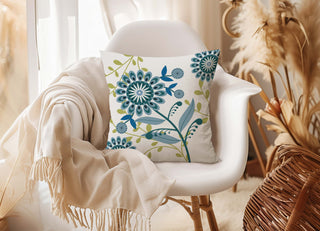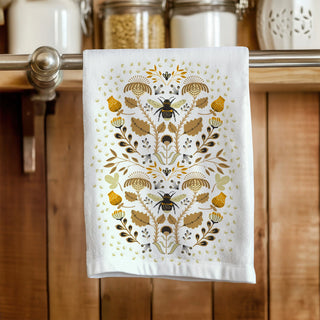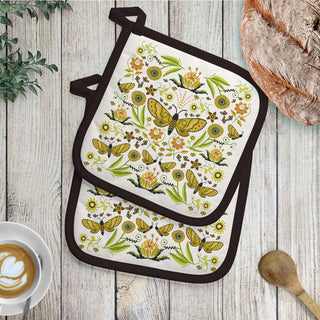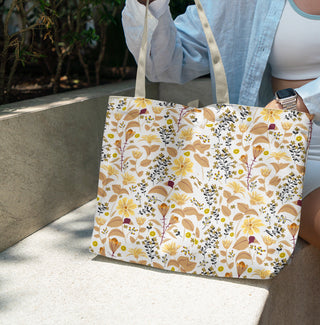The Leaking Hummingbird Feeder
I’m on my fifth hummingbird feeder in just two months. I’ve spent a good part of summer searching for a hummingbird feeder that doesn’t leak.
The few hummingbirds that do visit my feeder are confused. They think I’m punking them. A feeder goes up — a day later it’s gone. Fortunately, my little friends are a patient sort and have allowed me the time to figure things out.
Putting up a hummingbird feeder only to find that it leaks is frustrating! More frustrating is realizing that you’ve invited a colony of ants over for the buffet taking place underneath the feeder. So, this is what I’ve been doing for a while: buying a feeder, putting it up, taking it down, washing away the ants, returning the feeder, taking it down, and buying another one. Rinse and repeat.
Before I bought my first hummingbird feeder, I knew very little about the beautiful creatures who visit it. It really isn't terribly complicated, but there's more to feeding hummingbirds than simply buying the feeder.
So, I thought I'd share a few bits of advice if you're thinking about getting a hummingbird feeder.
What Type of Hummingbird Feeder is Best?
First let's talk about the design of the feeder itself.
1. To be blunt, choose a hummingbird feeder that doesn't leak.
Take a look at the flowers on these feeders.



Many feeders feature flowers arranged in a similar manner. There’s not a lot of variation in the placement and angle of the flowers on each feeder that I bought and many of those that I didn’t. The problem is, once you put nectar into the feeder, gravity does its thing and the nectar dribbles out of the hole in the flower onto the ground. And then come the ants to feed at your special outdoor diner.
Finally, I ended up using an old feeder that was sitting in a box of stuff I was going to take to the thrift shop. I don't know why I was going to get rid of it. Newer is not always better. Here it is, hung outside my studio window—this type of feeder is called a saucer-type feeder. No leaking!

2. Choose a feeder that you can add nectar to easily.
Some feeder containers are not easy to detach from the rest of the feeder. Nectar is sticky; you don't want it all over your kitchen counters.
3. Choose one that allows you to see the level of nectar remaining in the feeder.
I’ve seen quite a few hummingbird feeders that rely more on appearance than function. The ones that feature a colored glass diamond pattern are pretty, but it’s not easy to see how much nectar remains. It could be empty before you know it. You want angry hummingbirds? I don’t.
And speaking of glass hummingbird feeders... Not for me. I’m not crazy about using plastic, but I’m very clumsy.
4. You want a feeder that comes with its own hook so that you don’t have to make one out of a hairpin or clothes hanger.
Note of caution: Though it’s a very cute idea, hummingbird feeders that use suction cup attachments are fraught with peril. I bought this one:

... and had about 3 days of joy until the suction cup failed. The feeder landed on my concrete patio and shattered. Unless you add some glue to the suction cup, don’t assume the suction will hold.
5. Avoid yellow bee guards (the yellow flowers surrounding the hole) because the yellow might attract bees.
What Do I Put in a Hummingbird Feeder?
A simple mixture of refined, white table sugar dissolved in hot water is good enough. Nothing fancy. The standard mixture is ¼ cup sugar to 1 cup water. Let the mixture cool to room temperature before you put it in the feeder. If you have refrigerated a large batch of sugar water, allow it to warm to room temperature before using it. Do not add red food coloring. Hummingbirds are attracted by the red colors of the feeder itself, so there's no need to tint the nectar red.
How Often Should I Change the Nectar?
It's extremely critical to know how often to change the nectar in a hummingbird feeder. Spoiled nectar can be very harmful to hummingbirds. There are bacterial, fungal and viral infections that spoiled nectar can cause.
In the summer, clean feeders every day if temperatures go above 90 degrees F (32 degrees C) and every 2-3 days in cooler temperatures. Never let a feeder sit out for more than three days.
Regularly check for signs of spoilage like cloudiness, strange odors, or mold, and clean the feeder thoroughly each time the nectar is changed.
This is why I'm probably going to buy two of the same feeders. While I'm washing one, the other can be hung outside. The diner is open 24-7.
What’s the Best Location for a Hummingbird Feeder?
Do:
- Hang hummingbird feeders where they will get a fair amount of shade.
- Put a feeder where you can see it.
- Hang it where there are flowers and near water, such as a bird bath.
- Place the feeder 5-6 feet from the ground. If your cat can jump higher than that, place the feeder higher.
- Keep the feeder away from other bird feeding stations because they are territorial and can become aggressive. I definitely would not want to be stabbed by a hummingbird beak.
Don't:
- Hang feeders near dense bushes or trees where predators might hide.
- Hang them directly in front of windows where collisions can occur.
- Hang them near other bird feeders (especially those with seeds).
- Hang them in direct sunlight which can spoil the nectar.
- Place them near busy roads or driveways, where loud noises might deter hummingbirds.
- Put feeders in areas with pest problems like wasp or hornet nests.
What's the Best Time to Put a Hummingbird Feeder Out?
It's important to know when to put a hummingbird feeder out so that you find the optimal time of the year. You can hang them one to two weeks before you expect to see the first flowers blooming, since hummingbirds follow the blooming of flowers during their migration.
When Should I Take Down My Hummingbird Feeder?
If possible, feeders should be taken down before your hummingbirds begin their annual migration. The main exception is Anna's Hummingbird, which stays put all year along the Pacific Coast.
The Benefits of Hummingbirds
Hummingbirds gather pollen on their heads as they go from flower to flower, helping fertilize them. This behavior also creates new generations of the plants on which we depend.

From the Pollinator Partnership
I'm glad I didn't give up on finding a hummingbird feeder. It's always going to be a thrill to see this through my studio window:

Resources:





